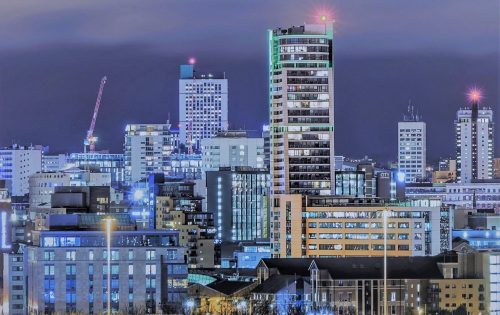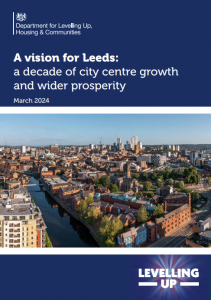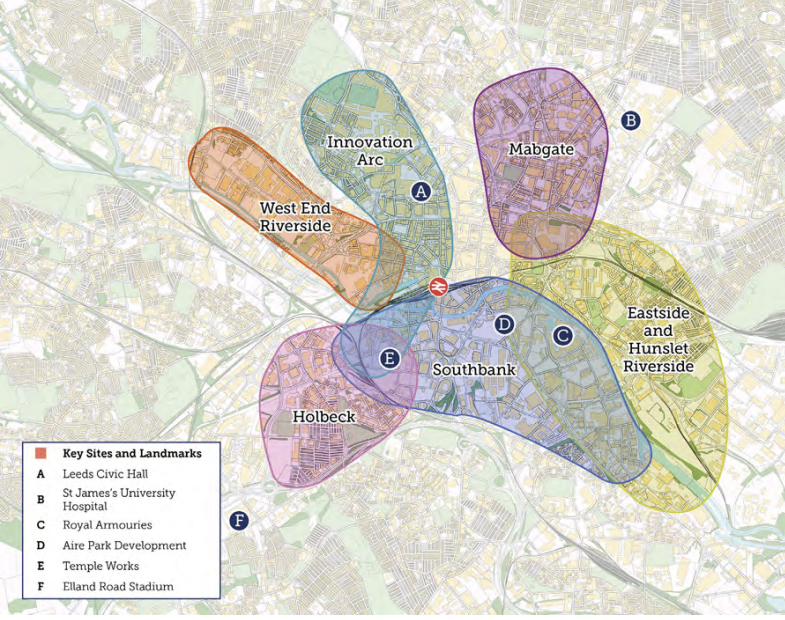Vision for 20,000 new homes in Leeds launched

The long-term plan to build 20,000 homes in Leeds by 2033 has been set out in a new Vision for Leeds document.
The Government, West Yorkshire Combined Authority and Leeds City Council are working together to deliver an ambitious housebuilding strategy alongside the delivery of a mass transit scheme in the city.
The plans will be led by the Leeds Transformational Regeneration Partnership, a new body that Leeds City Council will formally approve at a meeting of its executive board next week.
Levelling-up Secretary Michael Gove had trailled the publication of the strategy at the Convention of the North event held in the city last Friday.

The Budget also included £10m additional funding to support further stages of design and development of British Library North, with the Temple Works site seen as a key part of the redevelopment of Holbeck.
Gove said: “Leeds is on the cusp of becoming a globally competitive city. Boosted by targeted government investment and collaborative working with the private sector, we can ensure that it flourishes as a truly world-class centre.”
He said he was “using the convening power of central government to supercharge development in Leeds”, with Homes England also a partner in the delivery over the next decade.
The plan is focused on six associated neighbourhoods in and around the city centre – Mabgate, Eastside & Hunslet Riverside, South Bank, Holbeck, West End Riverside and the Innovation Arc – and complements existing development schemes that are already in place.

Six neighbourhoods are the focus of the long-term housing plan (Credit: Vision for Leeds)
- 2,000-plus homes in Mabgate, with key sites identified at Bridge Street, Regent Street, Eastgate and Mabgate Yard.
- 2,000 homes in Eastside and Hunslet Riverside, focused on Marsh Lane, Armouries Drive and East Street.
- A further 1,000 homes in the central South Bank area, at Aire Park and related development sites around it.
- 3,000 homes in Holbeck, including major brownfield sites on Sweet Street and part of the Temple Quarter.
- 2,000 homes in West End Riverside, including at City Reach and the Tannery, with other opportunities along the Kirkstall Road corridor and a mixed-use gateway to the Riverside area
- 3,000 homes in the Innovation Arc (north) area, in the residual LGI estate, with sites coming forward at Lisbon Street and at Wellington Street.
The areas have been prioritised because of their “untapped potential”, with each neighbourhood offering “clear improvement opportunities, with identified key sites and regeneration plans”.

Cllr James Lewis
Cllr James Lewis, the leader of Leeds City Council, said: ““The city centre has been at the heart of our growth, with substantial investments in the residential, retail, and leisure sectors, the first phases of the South Bank now well underway, the establishment of the Innovation Arc, Holbeck’s renaissance and the establishment of the West End as a core business district.
“There’s still much more to be achieved. Many Leeds residents have yet to experience the benefits of these changes, including those who live in the neighbourhoods closest to the centre.
“Following over a decade of locally-led regeneration, there is incredible momentum in our city and an active development pipeline exceeding £7bn, giving us a unique opportunity to grow further, faster.”
Leeds has delivered more than 17,000 homes in the last five years, representing 1.5% of England’s overall housing supply, and has built the most affordable homes of any Core City in that period.
“Success can be accelerated if we work together,” said West Yorkshire mayor Tracy Brabin. “Furthermore, we are committed to delivering the West Yorkshire Mass Transit system, connecting more people to Leeds City Centre, opening up jobs, education, training and leisure opportunities across the region. This initiative will unlock greater prosperity as we create a greener, more sustainable transport system that better connects our towns and cities, enabling our regional economy to thrive.”
£200m has been allocated to West Yorkshire Combined Authority to develop the case for mass transit. Work is anticipated to start in 2028, with mass transit hoped to deliver its first route in the early 2030s.
The Leeds Transformational Regeneration Partnership will bring together Government, Leeds City Council, West Yorkshire Combined Authority and Homes England, and build on the Strategic Place Partnership.
It is expected to support partners to address fragmented land ownership and infrastructure barriers, create a “single front door” for public funding, financing and site-enabling discussions, raise low land values through comprehensive placemaking, and plan neighbourhoods to be ready for the arrival of mass transit.







